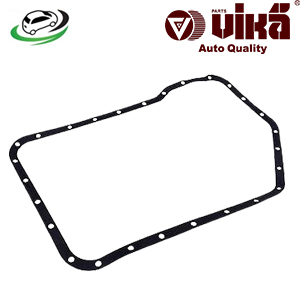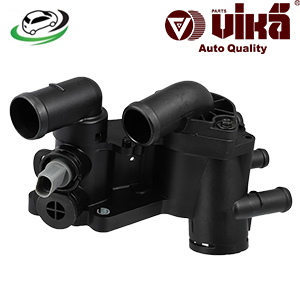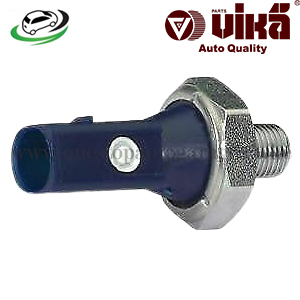-20%
Get Facet Engine Oil Pressure Switch AUDI Cabriolet B3 (8G7) / VW Golf IV (1J1)/Bora I (1J2)/Caddy II MPV/Transporter T4/Sharan (7M8/7M9/7M6) 028919081G
The engine oil pressure switch is a vital component of the engine’s lubrication system. It monitors the oil pressure within the engine and provides critical information to both the driver and the vehicle’s engine control unit (ECU). By ensuring that the engine maintains proper oil pressure, the switch helps to prevent engine damage and ensure optimal performance. This guide will delve into the role, types, symptoms of failure, replacement process, and maintenance tips for the engine oil pressure switch.
1. Understanding the Engine Oil Pressure Switch
a. Role of the Engine Oil Pressure Switch:
The engine oil pressure switch, also known as the oil pressure sensor, monitors the oil pressure within the engine. It is typically located near the oil filter or on the engine block. The switch has two primary functions:
- Warning Light Activation: It triggers the oil pressure warning light on the dashboard if the oil pressure drops below a critical level. This warning alerts the driver to potential issues that need immediate attention.
- Signal to the ECU: It sends oil pressure data to the engine control unit (ECU), which uses this information to manage engine performance and detect potential problems.
b. How It Works:
The engine oil pressure switch operates based on the pressure of the oil circulating through the engine. It contains a pressure-sensitive element that opens or closes an electrical circuit depending on the oil pressure level. When the oil pressure is within the normal range, the switch remains closed, allowing current to pass through. If the pressure drops below a certain threshold, the switch opens the circuit, sending a signal to illuminate the warning light on the dashboard and alert the driver.
c. Components of the Engine Oil Pressure Switch:
- Pressure Sensor: The core component that detects the oil pressure and converts it into an electrical signal.
- Electrical Connector: Connects the switch to the vehicle’s wiring system, allowing it to communicate with the dashboard and ECU.
- Housing: Encases the pressure sensor and provides a mounting point for the switch on the engine.
2. Types of Engine Oil Pressure Switches
a. Mechanical Oil Pressure Switch:
- Description: Uses a mechanical diaphragm or piston to measure oil pressure. When the pressure exceeds a certain level, the diaphragm moves, closing or opening an electrical circuit.
- Advantages: Simple design and reliable performance.
- Disadvantages: Limited ability to provide precise pressure readings and lacks integration with modern ECU systems.
b. Electronic Oil Pressure Sensor:
- Description: Uses electronic components and sensors to provide a more accurate and continuous measurement of oil pressure. The sensor converts the pressure into an electrical signal that is sent to the ECU.
- Advantages: Provides accurate and real-time data, which can be used by the ECU to make performance adjustments and diagnose potential issues.
- Disadvantages: More complex and costly compared to mechanical switches.
3. Symptoms of a Failing Engine Oil Pressure Switch
a. Oil Pressure Warning Light:
One of the most common symptoms of a failing oil pressure switch is the illumination of the oil pressure warning light on the dashboard. This light may come on intermittently or stay on continuously, indicating that the oil pressure is below the acceptable range.
b. Erratic or Fluctuating Oil Pressure Readings:
A faulty oil pressure switch may cause erratic or fluctuating oil pressure readings on the dashboard gauge. This can make it difficult for the driver to accurately monitor the engine’s oil pressure.
c. Engine Noise:
If the oil pressure switch fails and the engine oil pressure drops too low, you may notice unusual engine noises, such as knocking or tapping sounds. Low oil pressure can lead to inadequate lubrication and increased friction between engine components.
d. Poor Engine Performance:
A failing oil pressure switch can lead to poor engine performance, including reduced power, sluggish acceleration, and difficulty maintaining proper idle speed. This is often due to the engine running with insufficient oil pressure.
e. Oil Leaks:
In some cases, a damaged oil pressure switch may develop leaks, causing oil to drip or pool around the switch area. This can lead to a loss of oil and further engine damage if not addressed promptly.
f. Warning Messages on the Dashboard:
Modern vehicles equipped with advanced onboard diagnostics may display specific warning messages related to oil pressure issues. These messages can provide additional information about the problem and help guide repairs.
4. Causes of Engine Oil Pressure Switch Failure
a. Age and Wear:
Over time, the engine oil pressure switch can experience wear and tear due to exposure to high temperatures, vibration, and oil contaminants. This natural aging process can lead to a loss of functionality and eventual failure.
b. Oil Contamination:
Contaminated oil can affect the performance of the oil pressure switch. Dirt, sludge, and debris in the oil can clog the switch or interfere with its ability to accurately measure pressure.
c. Electrical Issues:
Faulty wiring, loose connections, or damaged electrical components can affect the oil pressure switch’s performance. Electrical issues can prevent the switch from sending accurate signals to the dashboard or ECU.
d. Overheating:
Excessive heat from the engine or a malfunctioning cooling system can damage the oil pressure switch. High temperatures can cause the switch’s internal components to degrade or fail.
e. Improper Installation:
Incorrect installation of the oil pressure switch can lead to leaks or improper functioning. It’s essential to follow the manufacturer’s specifications and ensure proper installation to avoid these issues.
5. Replacing the Engine Oil Pressure Switch: Step-by-Step Guide
a. Preparation:
Before beginning the replacement process, gather all necessary tools and supplies, including the new oil pressure switch, a wrench or socket set, and an oil drain pan. Ensure the vehicle is parked on a level surface, and the engine is cool.
b. Draining the Engine Oil:
- Step 1: Place an oil drain pan under the engine oil pan to catch any spilled oil.
- Step 2: Remove the oil drain plug and allow the oil to drain completely into the pan.
- Step 3: Reinstall the oil drain plug once the oil has drained.
c. Removing the Old Oil Pressure Switch:
- Step 1: Locate the engine oil pressure switch, typically found near the oil filter or on the engine block.
- Step 2: Disconnect the electrical connector from the switch.
- Step 3: Use a wrench or socket set to remove the old oil pressure switch. Be prepared for a small amount of oil to leak out when the switch is removed.
d. Installing the New Oil Pressure Switch:
- Step 1: Apply a small amount of thread sealant or Teflon tape to the threads of the new oil pressure switch, if recommended by the manufacturer.
- Step 2: Install the new switch by threading it into place and tightening it with a wrench or socket set. Ensure that it is snug but avoid over-tightening, which can damage the switch or the engine block.
- Step 3: Reconnect the electrical connector to the new switch.
e. Refilling Engine Oil:
- Step 1: Refill the engine with the appropriate type and amount of oil, following the manufacturer’s specifications.
- Step 2: Check the oil level using the dipstick and add more oil if necessary to reach the correct level.
f. Final Checks:
- Step 1: Start the engine and let it run for a few minutes. Check for any leaks around the new oil pressure switch.
- Step 2: Monitor the oil pressure warning light and gauge to ensure that the new switch is functioning correctly and that the oil pressure is within the normal range.
- Step 3: Take the vehicle for a short test drive, paying attention to any unusual noises or performance issues.
6. Maintenance Tips for the Engine Oil Pressure Switch
a. Regular Oil Changes:
Frequent oil changes help keep the oil clean and free from contaminants that can affect the oil pressure switch. Follow the manufacturer’s recommended oil change intervals to maintain optimal engine performance.
b. Inspect Wiring and Connections:
Periodically check the wiring and electrical connections related to the oil pressure switch. Ensure that connections are secure and free from damage to prevent electrical issues.
c. Monitor Oil Pressure:
Regularly monitor the oil pressure gauge and warning light on the dashboard. Address any sudden changes in oil pressure promptly to avoid potential damage.
d. Address Engine Overheating:
Ensure that the engine cooling system is functioning correctly to prevent overheating. Proper cooling helps to prevent damage to the oil pressure switch and other engine components.
e. Follow Manufacturer Recommendations:
When replacing the oil pressure switch, use parts that meet or exceed the manufacturer’s specifications. This ensures compatibility and reliable performance.
Follow us on Facebook for more parts.



